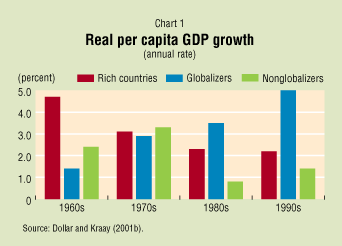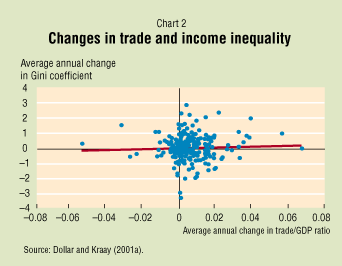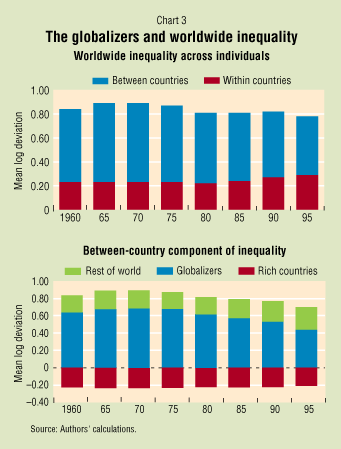Globalization and free trade have increased incomes in the developing countries.


Poverty has declined

http://www.imf.org/external/pubs/ft/fandd/2001/09/dollar.htm
Per capita GDP growth in the post-1980 globalizers accelerated from 1.4 percent a year in the 1960s and 2.9 percent a year in the 1970s to 3.5 percent in the 1980s and 5.0 percent in the 1990s (Chart 1). This acceleration in growth is even more remarkable given that the rich countries saw steady declines in growth from a high of 4.7 percent in the 1960s to 2.2 percent in the 1990s. Also, the nonglobalizing developing countries did much worse than the globalizers, with the former's annual growth rates falling from highs of 3.3 percent during the 1970s to only 1.4 percent during the 1990s. This rapid growth among the globalizers is not simply due to the strong performances of China and India in the 1980s and 1990s18 out of the 24 globalizers experienced increases in growth, many of them quite substantial.

Although the growth benefits of trade are increasingly recognized, many analysts are legitimately concerned about the effects of trade liberalization on income distribution. In our research, however, we document that the growth benefits of increased trade are, on average, widely sharedwe have found no evidence of a systematic tendency for inequality to increase when international trade increases. Chart 2 illustrates this point by plotting changes in a measure of inequality (the Gini coefficient, which ranges from 0 to 100, with a higher coefficient indicating greater inequality) on the vertical axis, and changes in trade volumes on the horizontal axis. This figure reflects the experiences of more than 100 developed and developing countries, with changes in trade and changes in inequality measured over periods of at least five years in order to capture the medium-to-long-run relationship between trade and inequality. Chart 2 exhibits a striking absence of any simple correlation between changes in trade and changes in inequality.

Poverty has declined
The combination of increases in growth and little systematic change in inequality in the globalizers has considerably boosted efforts to reduce poverty. In Malaysia, for example, the average income of the poorest fifth of the population grew at a robust 5.4 percent annually. Even in China, where inequality did increase sharply and the income growth rate of the poorest fifth lagged behind average income growth, incomes of the poorest fifth still grew at 3.8 percent annually. The fraction of the population of these countries living below the $1 a day poverty threshold fell sharply between the 1980s and the 1990s: from 43 percent to 36 percent in Bangladesh, from 20 percent to 15 percent in China, and from 13 percent to 10 percent in Costa Rica, to name a few.
Gap between rich and poor has narrowed
We have already seen that income inequality within countries is as likely to decrease as increase with increased trade. But is globalization leaving poor countries behind and widening the gap between the richest and poorest countries? Our evidence on the growth performance of the globalizers relative to the rich countries and the nonglobalizing developing countries suggests otherwise. The rapid growth of the globalizers relative to the rich countries means that the globalizers are narrowing the per capita income gap. Moreover, because most of the globalizersespecially China, India, and Bangladeshwere among the poorest countries in the world twenty years ago, their growth has been a force for narrowing worldwide inequality.

the top panel of Chart 3 first divides worldwide inequality into inequality between countries and inequality within countries. Consistent with the findings of other studies, most worldwide interpersonal income inequality can be attributed to the large differences in average incomes between countries, rather than to inequities in the distribution of income within countries. And since many of the globalizers were initially poor, their rapid growth over the past twenty years has contributed to reducing income inequality between countries. This can be seen in the bottom panel of Chart 3, which takes the between-country component of inequality and further subdivides it into the globalizers, the rich countries, and the rest of the world. Much of the decline in the between-country component of inequality can be seen to be due to the rapid growth of the globalizers, most notably China and India, whose economies' vast size has given them substantial weight in these calculations.
http://www.imf.org/external/pubs/ft/fandd/2001/09/dollar.htm
